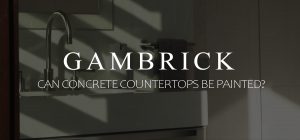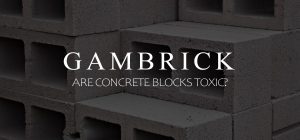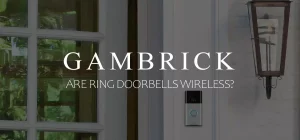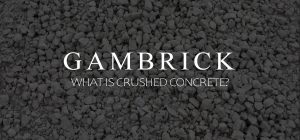
Should You Seal Concrete Around A Pool?
I’ve been a mason for over 25 years and can tell you firsthand that you should definitely seal the concrete around your pool. It’s easy to do, affordable, and has all sorts of benefits with almost no drawbacks. A concrete sealer will improve your pool deck’s appearance, prevent fading caused by harmful UV rays, and protect it from stains and harsh pool chemicals. It also makes the surface a bit less slippery when wet, and helps prevent mold and mildew growth.
Think of sealing a concrete pool deck like waxing your car, wearing sunscreen or sealing granite countertops. Although concrete doesn’t need to be sealed, it provides an additional layer of protection for very little cost.
It doesn’t matter if your concrete is raw, stamped, pavers, or stained, sealing it every few years is recommended. A good quality sealer will not only protect your concrete but also bring out the rich color of whatever they seal.
Sealers are available in many different gloss levels, ranging from flat to high gloss. A tinted sealer can even be used that will further enhance the color of your pool’s concrete. A sealer will even help prevent efflorescence, it’s that white powdery residue that can form on the surface of concrete. Slip resistant sealers are also available which are especially useful around a pool.
Sealers should be applied with a tough concrete roller and brushes that won’t get chewed up by the concrete’s gritty texture.
The concrete around your pool should be sealed every 2-3 years depending on weather conditions and the amount of sun the pool gets per year. Preventing future damage will not only save money in the long run but will keep your concrete looking like new for years.
What Happens If You Don’t Seal Concrete Around A Pool?
There are lots of reasons why you should seal concrete around a pool. But it isn’t a requirement. Let’s take a look at all the things that can happen if you don’t.
Mold and Mildew
Mold and mildew growth are pretty common around a pool. Especially in wet areas that don’t get as much sun. A really common place for fungi growth is in the cuts between slabs. It’s easy for moisture to sit inside these grooves and start growing mold.
Due to the porous nature of concrete, it’s very easy for mold to grow if you don’t seal it. Pores are a good thing around a pool because they’re less slippery, but they hold water.
Mold and mildew is definitely a bad thing to have growing around your pool and it’s very easy to prevent with a simple concrete sealer.
Stains
Concrete is porous which makes it easy to stain. Anything left on a concrete surface for too long has the potential to absorb into the slab and leave a permanent mark.
Salt, chlorine, and other chemicals used to treat the pool can harm concrete.
Common outside items like leaves or dirt can discolor your concrete permanently. This is especially common if you have planters around the pool. Almost everyone can relate to that ugly ring that’s left behind under a planter.
If you entertain around the pool then be careful with food and drinks. A spill that’s not cleaned up right away can easily absorb into the concrete and leave a stain.
While there are cleansers and methods to clean concrete it’s much better to prevent the stain rather than trying to clean it up later because some stains are just impossible to get out.
The right sealer will keep unwanted substances from penetrating the surface of your concrete and leaving an ugly stain.
Falls
The surface of unsealed concrete is a bit more slippery than when it’s been sealed which is a big negative when that concrete is around a pool.
About 155,000 injuries occur every year in or around swimming pools with many being caused by slipping and falling. Many of these are easily prevented by making the concrete surface less slippery.
UV Rays
The sun’s rays can deterioration concrete if it’s not sealed. Harmful UV rays can break down the chemical bonds that bind concrete together which leads to cracks and chips or flakes.
UV damage will eventually lead to the concrete becoming brittle. In some cases concrete will even deteriorate which turns it into dust and gravel. At this point the concrete starts to break apart into chunks. This is common in area of the country like Arizona that see lots of strong direct sunlight.
The good news is that UV damage is easy to deal with by applying a good concrete sealer as needed.
Cold
If you live in a cold climate, sealing the concrete around your pool will help reduce the chance of freeze thaw damage. Freeze thaw damage is caused by water penetrating the concrete surface and then expanding as it freezes. This can cause cracks, chips or surface flaking.
A sealer will keep water from sinking into your concretes cracks and pores. Water should bead up on the surface of the concrete if your sealer is doing its job. If this is not happening, it’s time to reseal your pool deck.
High traffic areas will likely need resealing on a frequent basis.
Fading
Fading is the #1 problem homeowners complain about with stamped concrete around a pool. Even when done by a pro, the best looking colored concrete will fade from years of direct sunlight and weather exposure if not properly maintained. That maintenance is a sealer.
Much of the stamped or textured concrete found around a pool and even some that’s left natural, is colored. This can either be a topical stain added at the end while the concrete is curing or a color thrown directly into the mix. Either way, a seal makes the color richer and protects it from fading.
Over time, especially if the concrete sees extreme weather conditions and sunlight, the sealer can begin to break down which causes the concrete to lose some of its surface color. However, with proper initial sealing and maintenance, your concrete’s color will stay strong for longer.
How To Tell If Your Concrete Needs Resealing
It’s very easy to tell if your concrete needs to be resealed. Simply spray some water onto the concrete. You’ll notice that when it’s sealed the water will bead up. This is similar to a sealed granite slab or freshly waxed car.
If the water doesn’t bead then it’s time to reseal the concrete.
Prevention
The main reason you seal concrete around a pool is protection.
A sealer is a protective layer that sits on top of your concrete. It penetrates into small pores to prevent mold and mildew growth, protect against UV damage, brighten colors and makes surfaces a little less slippery.
With the proper sealant, you can protect your concrete and keep it looking like new for a lot longer.
Poolside accidents can be reduced with a sealant because it makes concrete a little less slippery by providing better grip on your feet.
Sealers also prevent UV rays from damaging concrete which helps it last longer.
Many of the bad things that can happen when you don’t seal concrete are irreversible so I recommend you take the extra precaution and use a good concrete sealer around your pool. They’re not that expensive and it makes a great DIY project you generally only have to do once every few years.
How And When To Seal Your Concrete
The two most popular types of concrete sealers are silane-siloxane water repellent sealer and acrylic sealers. The finishes can range from flat to high gloss, and there are different tints available. You can even mix and match the sheen and tint. A very popular method is to use a glass on the trim work and a flat on your large walkway areas. It gives the same effect as using more gloss on the rim in your house.
You should reseal the concrete around a pool every 2-3 years on average. This varies based on climate, weather and sunlight. If you live in states like Arizona that see lots of strong direct sunlight then you may have to seal the concrete every year. But in milder climates every 2-3 years is generally fine.
Sealing the concrete around your pool is an important part of pool maintenance and should be done if you want to protect it from unwanted wear and tear.
Additional Tips
A good sealer will enhance and protect your new or existing swimming pool concrete. When properly sealed or resealed, the life of your concrete will be greatly extended.
Make sure that you or your contractor seals your the concrete with a a good sealer and at the appropriate time. I recommend using a penetrating or film forming sealer and a more natural, matte finish for the main walkways. If you want some contrast then use a gloss on trim areas.
Keep in mind that it’s very important that sealers used on exterior concrete allow both air and moisture to pass through.Check the label to make sure this is the case with the sealer you plan on using. make sure the label states that it’s for use specifically on exterior concrete.
With new concrete, a sealer should be applied after curing is complete. 7 to 14 days is generally enough time but it depends on the thickness and mix of your concrete. To be on the safe side I recommend waiting a full month.
Resealing
Keep in mind that it’s important to know what kind of sealer was originally used if possible. This helps avoid an undesirable chemical reaction between sealers.
Solvent based sealers should be resealed using a solvent based sealer, and the same goes for water based sealers and acrylics. As a general rule, use the exact same sealer type every time. You can experiment with different brands if you like, but make sure the main ingredient is the same.
If your concrete was sealed with polyurethane, the entire surface should be scuffed or abraded before another coat of polyurethane is applied. If you attempt to re coat without sanding first, the new sealer will peel right off the concrete. This is one of the main reasons I don’t recommend sealing with polyurethane products.
Summary: Should You Seal Concrete Around A Pool?
I’ve been a mason for over 25 years and can tell you firsthand that you should definitely seal the concrete around your pool. It’s easy to do, affordable, and has all sorts of benefits with almost no drawbacks. A concrete sealer will improve your pool deck’s appearance, prevent fading caused by harmful UV rays, and protect it from stains and harsh pool chemicals. It also makes the surface a bit less slippery when wet, and helps prevent mold and mildew growth.
Think of sealing a concrete pool deck like waxing your car, wearing sunscreen or sealing granite countertops. Although concrete doesn’t need to be sealed, it provides an additional layer of protection for very little cost.
It doesn’t matter if your concrete is raw, stamped, pavers, or stained, sealing it every few years is recommended. A good quality sealer will not only protect your concrete but also bring out the rich color of whatever they seal.
Sealers are available in many different gloss levels, ranging from flat to high gloss. A tinted sealer can even be used that will further enhance the color of your pool’s concrete. A sealer will even help prevent efflorescence, it’s that white powdery residue that can form on the surface of concrete. Slip resistant sealers are also available which are especially useful around a pool.
Sealers should be applied with a tough concrete roller and brushes that won’t get chewed up by the concrete’s gritty texture.
The concrete around your pool should be sealed every 2-3 years depending on weather conditions and the amount of sun the pool gets per year. Preventing future damage will not only save money in the long run but will keep your concrete looking like new for years.
If you have any questions or comments e-mail us any time.

John Mazzuca | About | More Posts |
Custom Home Builder
John Mazzuca is a custom home designer and builder at Gambrick with over 25 years experience in the construction industry. John has designed, built and/or remodeled hundreds of homes, small buildings, and commercial projects. He writes about business, real estate, home building, and household electronics. His work has been featured in Fox Business, Better Homes & Garden, House Beautiful, and more.




















